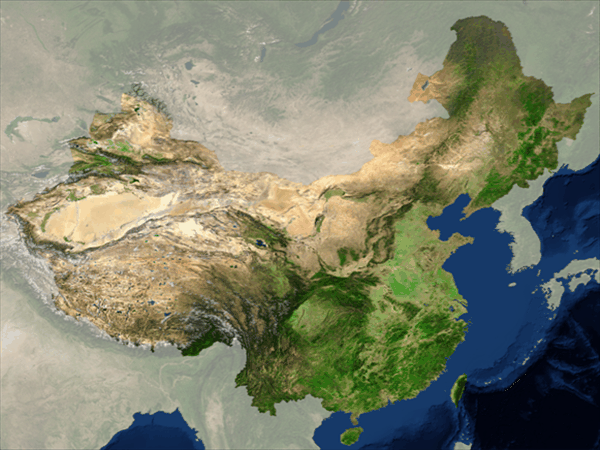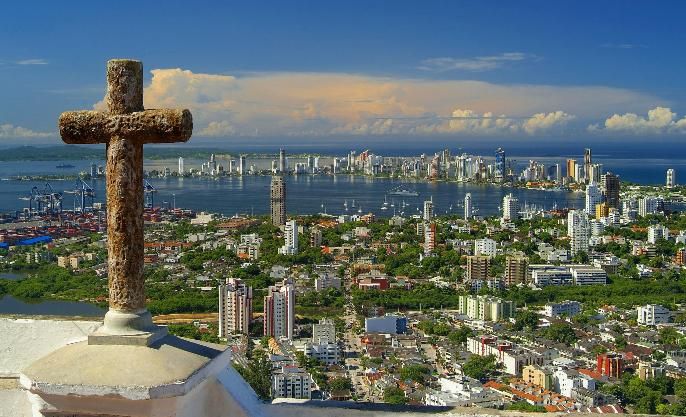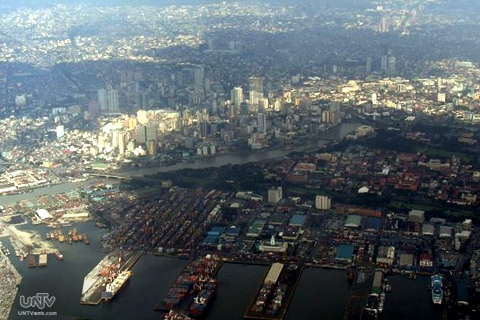This post spans the time since the Prehispanic period wherein Luzon traders virtually controlled all trade; from Sri Lanka to Nagasaki...
To the Hispanic period wherein our ships and crews were instrumental for the Columbian exchange between the Americas and the Asia-Pacific; without which, the spicy food used in Mexico (Imported from the Spice Islands in Indonesia and transshipped to the port of Acapulco by Filipino built ships and Filipino manned crews) or the silver adorning the Palace Museum in China (Imported from the mines of Peru and trans-shipped to Beijing via Filipino talent) would not have been possible.
Classical States Era
Rulers of Pan-Asian Commerce
The Bureaucrats of Mallaca
The Luzon spice trader Regimo de Raja, based in Malacca, was highly influential and the Portuguese appointed him as Temenggong (Sea Lord) of the Muslims of Malacca. His father and wife carried on his maritime trading business after his death. Another important Malacca trader was Curia de Raja who also hailed from Luzon. The "surname" of "de Raja" or "diraja" could indicate that Regimo and Curia, and their families, were of noble or royal descent as the term is an abbreviation of Sanskrit adiraja
~Wilkinson, R J. An Abridged Malay-English Dictionary (romanised). London: Macmillan and Co, 1948. Print, 291.
and http://sambali.blogspot.com/
The Merchant mariners of Sri Lanka
.jpg)
Sandalwood incense was an essential natural product in Buddhist, Hindu and other Asian religions. In the belief systems of South Asia, sandalwood paste would often represent the earth among the five elements. Believers smear the paste on the face and use it make the tilak (dot) on the forehead associated with the area of the "third eye." The sweet smell of burning sandalwood helps the dead depart from the body according to beliefs on the Indian subcontinent. The sacred fragrance also makes the wood a favorite material for sacred statues and other types of carving.
Records state that the fragrant wood provides a calming influence together with aloeswood (agarwood). The Japanese use sandalwood as incense during meditation practice[5]. Although many joss sticks use "sandalwood" in their product names, only the expensive varieties contain actual sandalwood or aloeswood.
Sufi Muslims borrowed the use of sandalwood paste in India from other religious practitioners. The paste may serve as a incense and also as a decoration during religious festivals. Among some Sufis sandalwood is believed to have healing or miraculous powers. The paste may mark the graves of Sufis in the state of Tamil Nadu.
The Portuguese reported that in the port of Sri Lanka the primary traders in Sandalwood imported from Timor were "Luzonians" or Lucuoes.
In his journal, Pigafetta describes the island of Timor in his time: "In this island, and nowhere else, is found white sandalwood, besides ginger, oxen, swine, goats, poultry, rice, figs, sugarcanes, oranges, lemons, wax, almonds, and other things, and parrots of divers sorts and colors.[6]" Furthermore, he mentions seeing a trading ship at Timor while he was there:
All the sandalwood and the wax which is traded by the people of Java and Malacca comes from this place, where we found a junk of Lozzon [Luzon] which had come to trade for sandalwood[7].
Pigafetta's account of Luzon merchants venturing to Timor to trade for sandalwood concurs with other accounts of the time, although this is the only one to connect Luzon merchants specifically with the sandalwood trade.
~Pigafetta, Antonio, and R A. Skelton. Magellan's Voyage: A Narrative Account of the First Circumnavigation. New York: Dover, 1994. Print, 141.
http://sambali.blogspot.com/
The favored elite of Brunei
The evidence suggests that the "Luzons," known to the Portuguese as Luções, were among the primary traders, if not the main ones, on three of the most important regional trade routes of the time. The Luzons of that period had very close relations with the kingdom of Brunei according to various European sources. Rui de Brito Patalim even states in 1514: "The people of that island [Brunei] call themselves Luções.[8]" For the next decade, Portuguese sources continued to use the term " Luções" to refer to the people of Brunei even though they clearly knew of the Luções on the island of Luzon (Lução).
Tome Pires, writing in the early 1500s, described Lução as ten days sailing from Brunei[9], and Pedro Fidalgo, who landed on the island after a storm drove his ship off course while sailing toward Brunei in 1545, described Luzon as lying between the latitudes nine and 22 degrees North[10].
Pires also mentions a community of people from Luzon in Malacca including influential maritime traders, and he mentions that the Luzons and the people of Brunei were almost "one people." The evidence seems to suggest that the merchants of Luzon were conducting a great deal of the trade across Southeast Asia and northward to China including possibly much of the sandalwood trade.
International relations including royal intermarriages may also have helped cement ties between Luzons and others in the Philippines with people throughout the Southeast Asia region. Pigafetta, for example, mentions that a prince of Luzon acted as admiral for the king of Brunei. Rajah Soliman of Manila's son married the daughter of the Sultan of Brunei, and many relatives of the Rajahs Lakandula, Soliman and Matanda fled to Brunei along with their entourages after the Spanish invasion of Luzon. Humabon, the King of Cebu during Magellan's visit, was fluent in either Malay, Cham or Thai, which he used to speak with a merchant from "Ciama[18]
~Junker, Laura L. Raiding, Trading, and Feasting: The Political Economy of Philippine Chiefdoms. Honolulu: University of Hawaiì Press, 1999. Internet resource, 109; Antony, Robert J. Elusive Pirates, Pervasive Smugglers: Violence and Clandestine Trade in the Greater China Seas. Hong Kong: Hong Kong University Press, 2010. Print, 76.
http://sambali.blogspot.com/
The rulers of Timor and Malaku

During the union of Spain and Portugal under Philip II, the trade between Manila and Macau was brisk. After the dissolution of the union, the trade fell into disrepair until the Viceroy in Goa decide to resurrect it in 1672 to take advantage of the treaty with the Hapsburgs[31]. Interestingly enough, the Captain-general at that time in Timor, the source of sandalwood, was a person of Kapampangan descent known as Mattheus da Costa[32].
Da Costa traced his descent from the Papangers (Kapampangans) who served with the Spanish in Ternate in the seventeenth century[33]. His forebears eventually moved to Larantuka, which may have harbored a sizable Papanger population who made up part of the population of Mardikers known as Topasses. Da Costa established himself as Topass lord, and his descendents intermarried with another important clan, the De Hornays, to form the hereditary lineage that ruled Timor during much of the colonial sandalwood trade[34].
Da Costa was a "Black Portuguese" of Kapampangan descent who likely spoke Portuguese. No information is available about any connections he may have had with his ancestral homeland of Pampanga in Luzon. The mixed race Topasses managed to hold off both the Dutch and the Portuguese despite claiming allegiance to the Portuguese crown. They effectively controlled the sandalwood trade from the middle of the seventeenth century until late in the nineteenth century. Although they only controlled the whole island of Timor for about a century, they had a powerful influence among the Timorese royal, noble and aristocratic families that allowed them to foil Portuguese and Dutch designs on the island. The Topasses continued to resist colonial powers in the interior of Timor until the early twentieth century.
~Hägerdal, Hans. Lords of the Land, Lords of the Sea: Conflict and Adaptation in Early Colonial Timor, 1600-1800. Leiden: BRILL, 2012. Print, 108.
http://sambali.blogspot.com/
The sole traders at the port Guangzhou

When Martin de Goiti arrived in Manila in 1570, he found 40 Chinese and 20 Japanese families living in the city along with four trading junks in the harbor[16]. These connections were profound and probably had a significant impact on the future direction of trade between Asian and European nations that started in the 16th century. Pires, for example, mentions that neither Javans nor Malays were allowed at the port of Guangzhou according to an account he heard from Luzons "who have been there." The report suggests that the Luzons were trading in South China or at least in Guangzhou to the exclusion of two of the most important trading groups of Insular Southeast Asia at the time.
The evidence provided by Portuguese writers suggests that the Luzons may have monopolized the trade between Malacca and China. Miguel Lopez de Legaspi reported in the late sixteenth century that merchants from Luzon and Brunei were frequently mistaken for Chinese and that people in Maluku considered their ships to be "Chinese junks" because they carried Chinese goods. Such reports indicate that the Luzons together with their allies from Brunei acted as "middlemen" for the trade between China and Southeast Asia. The Ming bans on Chinese external trade combined with the close relationships forged in earlier periods may have helped the Luzons secure this position. Both Legaspi and Villalobos report Chinese junks in Butuan, and it is noteworthy that the expeditions of Magellan and Villalobos sailed to the Moluccas, Ambon and Timor via the southern Philippines
~ Cortes, Rosario M, Celestina P. Boncan, and Ricardo T. Jose. The Filipino Saga: History As Social Change. Quezon City, Philippines: New Day Publishers, 2000. Print, 24.
http://sambali.blogspot.com/
The monopolizers of trade in Nagasaki

This powerful presence in the trade of Chinese goods in 16th-century East Asia was also felt strongly by Japan.[10] The Ming Empire treated Luzon traders more favorably than Japan by allowing them to trade with China once every two years, while Japan was only allowed to trade once every 10 years. Japanese merchants often had to resort to piracy in order to obtain much sought after Chinese products such as silk and porcelain. Famous 16th-century Japanese merchants and tea connoisseurs like Shimai Soushitsu (島井宗室) and Kamiya Soutan (神屋宗湛) established branch offices on the island of Luzon. One famous Japanese merchant, Luzon Sukezaemon (呂宋助左衛門), went as far as to change his surname from Naya (納屋) to Luzon (呂宋).
http://en.wikipedia.org/wiki/Kingdom_of_Tondo
We'll this state of affairs ain't really surprising when you look at the scenario the Philippines was in.
It's at the center of a cresent. 
With neighbors at all sides except the immediate east. (Although there are seas separating our neighbors and our connections are not over land)
This sort of situation made us really blessed and lucky and we should be thankful for it since it allowed for maritime commerce in almost all directions.
Only Sicily at Italy is more strategically placed when it comes to Maritime commerce.

When compared to Filipinas.












